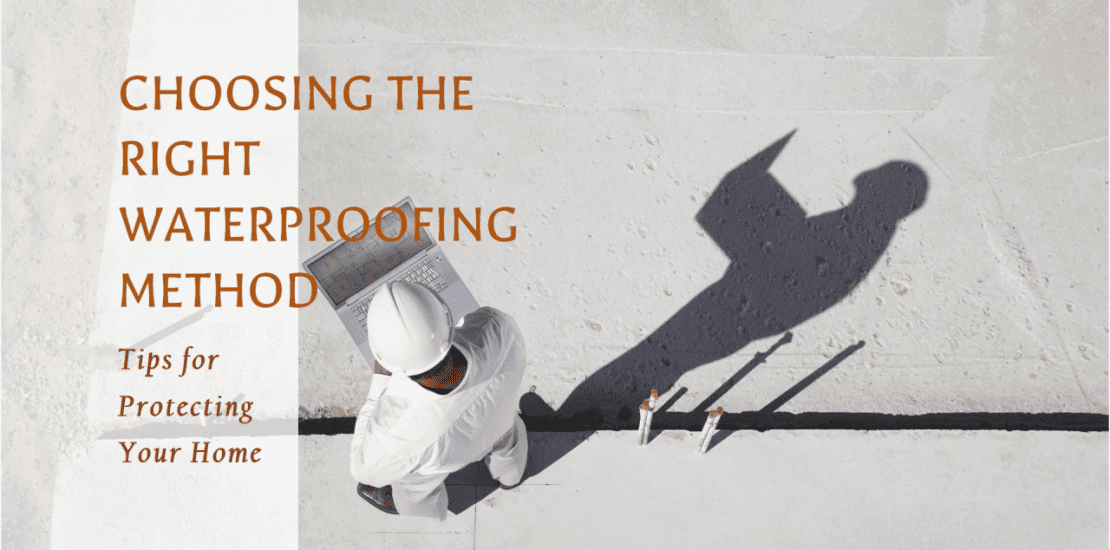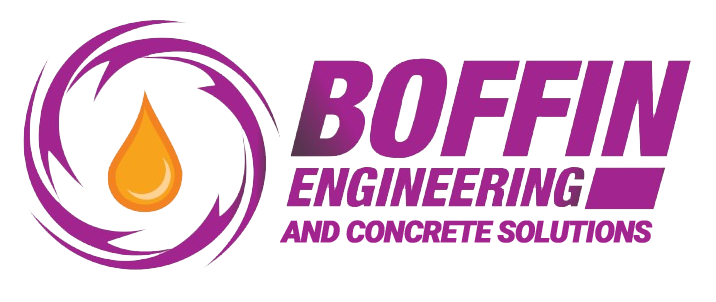- July 10, 2024
- Posted by: boffin
- Category: Uncategorized

When it comes to safeguarding your home from water damage, choosing the right waterproofing method is crucial. With so many options available, it can be challenging to determine which method is best suited for your specific needs. This article will guide you through the essential factors to consider, ensuring you make an informed decision that will protect your home for years to come.
1. Assess Your Home’s Needs
Before selecting a waterproofing method, it’s important to thoroughly assess your home’s unique requirements. Consider the following factors:
– Location: Is your home in a flood-prone area? Do you experience heavy rainfall or high humidity levels?
– Foundation Type: What type of foundation does your home have (e.g., concrete slab, crawl space, basement)?
– Existing Damage: Are there any current signs of water damage, such as mold, mildew, or efflorescence?
Understanding these aspects will help you determine the severity of the waterproofing needed and the areas that require the most attention.
2. Identify the Area to be Waterproofed
Different parts of your home may require different waterproofing methods. Common areas that need waterproofing include:
– Basements and Foundations: To prevent groundwater from seeping through.
– Bathrooms and Kitchens: To protect against water spills and humidity.
– Roofs and Balconies: To guard against rain and weather exposure.
– Walls and Floors: To ensure no moisture penetrates from the outside.
Identifying the specific areas that need waterproofing will help you choose the most effective method.
3. Consider the Types of Waterproofing Methods
There are several waterproofing methods available, each with its own advantages and applications. Here are some of the most common:
i). Cementitious Waterproofing:
Best For: Bathrooms, water tanks, and areas with constant water exposure.
– Advantages: Easy to apply and cost-effective.
ii). Liquid Waterproofing Membrane:
Best For: Roofs, balconies, and terraces.
– Advantages: Provides a seamless and flexible barrier.
iii). Bituminous Coating:
Best For: Foundations and concrete structures.
– Advantages: Excellent adhesion and protective properties.
iv). Bituminous Membrane:
Best For: Flat roofs and underground structures.
– Advantages: High durability and resistance to punctures.
v). Polyurethane Liquid Membrane:
Best For: Roofs, terraces, and balconies.
– Advantages: Highly flexible and UV resistant.
4. Evaluate the Benefits and Drawbacks
Each waterproofing method comes with its own set of benefits and potential drawbacks. For example:
i). Cementitious Waterproofing:
– Benefits: Easy application and cost-effective.
– Drawbacks: Less flexibility, not suitable for large areas prone to movement.
ii). Liquid Waterproofing Membrane:
– Benefits: Seamless application and excellent flexibility.
– Drawbacks: Requires professional application for best results.
iii). Bituminous Products:
– Benefits: Strong protection and longevity.
– Drawbacks: Can be less eco-friendly and more labour-intensive.
Considering these factors will help you weigh the pros and cons of each method.
5. Factor in Durability and Maintenance
The longevity and maintenance requirements of the waterproofing method are crucial considerations. For instance:
– Liquid membranes may need reapplication every few years, especially in areas with high UV exposure.
– Bituminous coatings can last longer but may require regular inspections and maintenance to ensure their effectiveness.
Choose a method that offers the right balance of durability and maintenance based on your willingness and ability to perform regular upkeep.
6. Budget Considerations
Your budget will play a significant role in determining the waterproofing method. While some methods may be more cost-effective initially, they might require more frequent maintenance or replacements. Conversely, investing in a higher-end waterproofing solution may save you money in the long run by providing more durable protection.
7. Consult with Professionals
When in doubt, consulting with waterproofing professionals can provide valuable insights. They can assess your home, recommend the best methods, and ensure proper application. Professional advice can save you time, money, and prevent potential DIY mishaps.
Conclusion
Choosing the right waterproofing method for your home involves careful consideration of your specific needs, the area to be waterproofed, the benefits and drawbacks of each method, durability, maintenance, and budget. By taking these factors into account and seeking professional advice, you can ensure that your home remains protected from water damage, providing you with peace of mind and a long-lasting, resilient structure. Investing in the right waterproofing solution today will pay off in the form of a safe, dry, and durable home for years to come.
